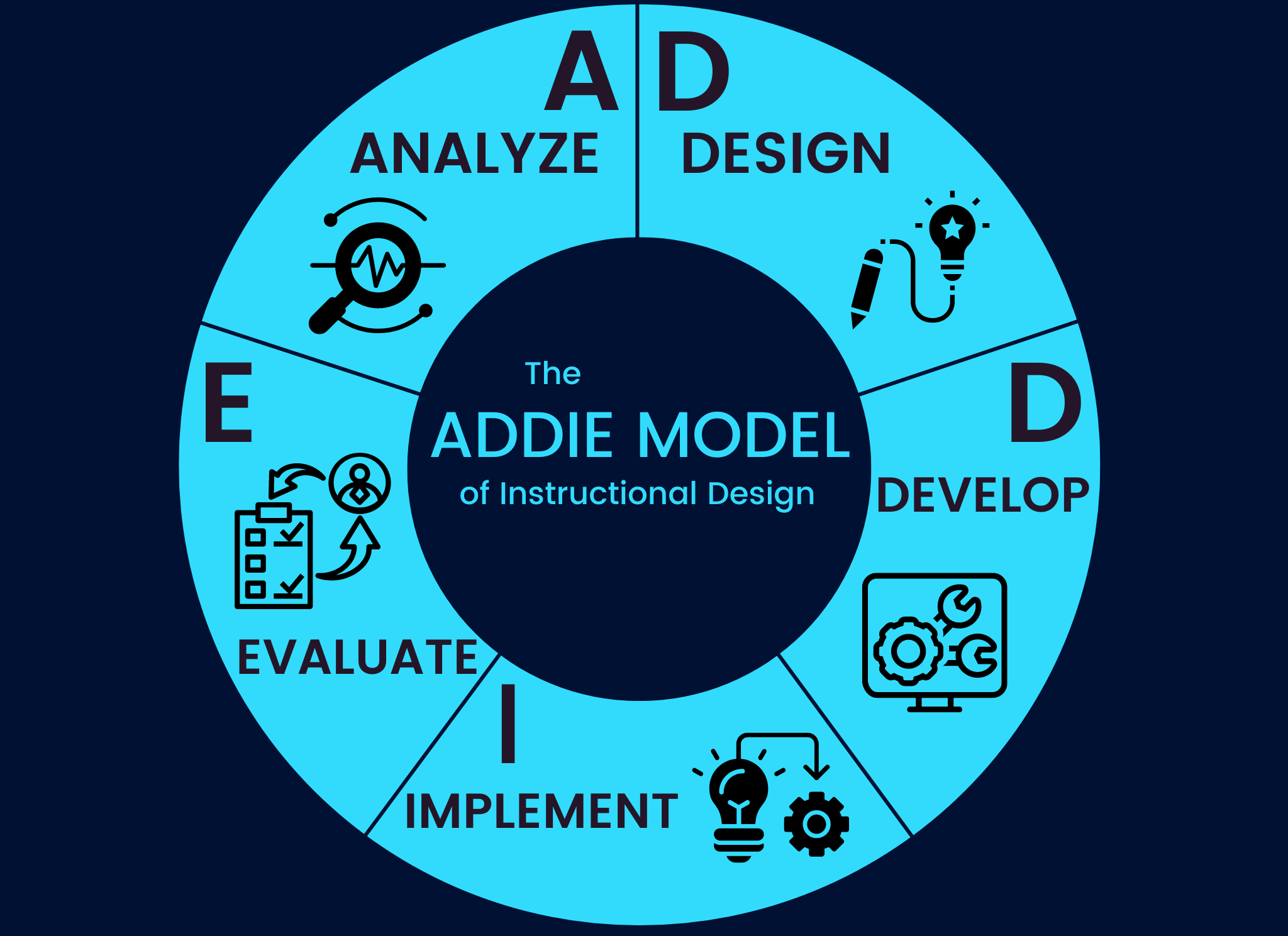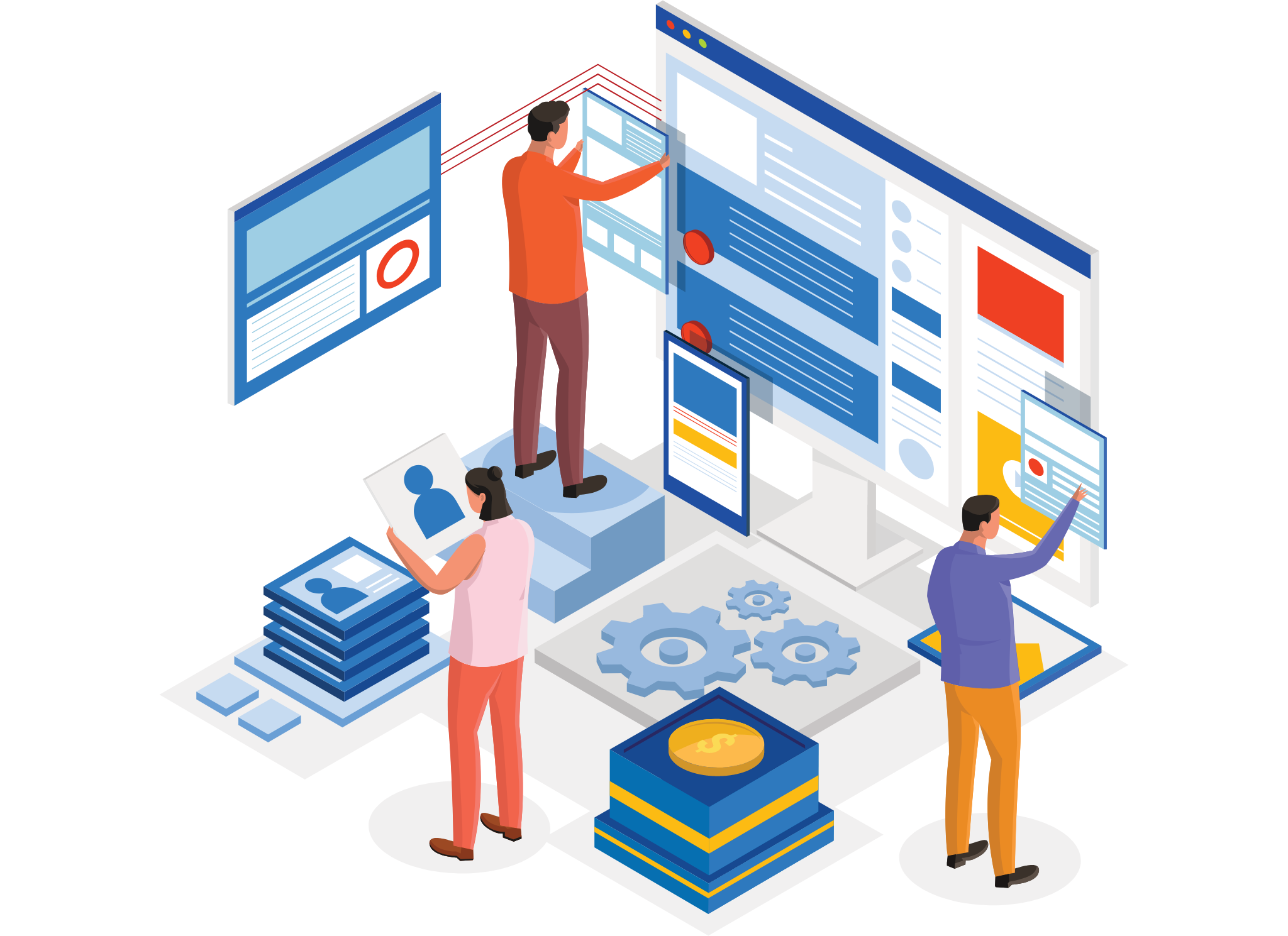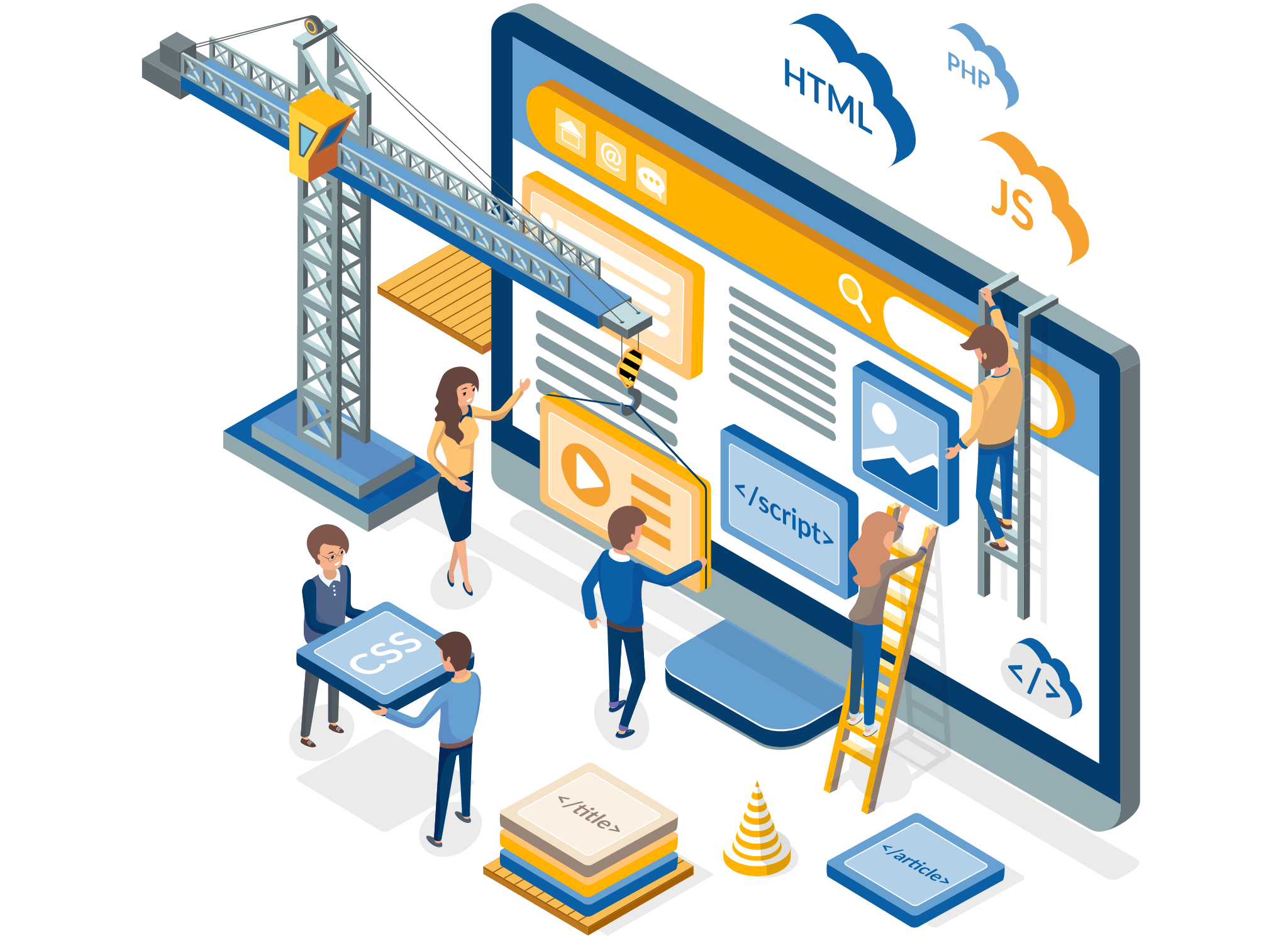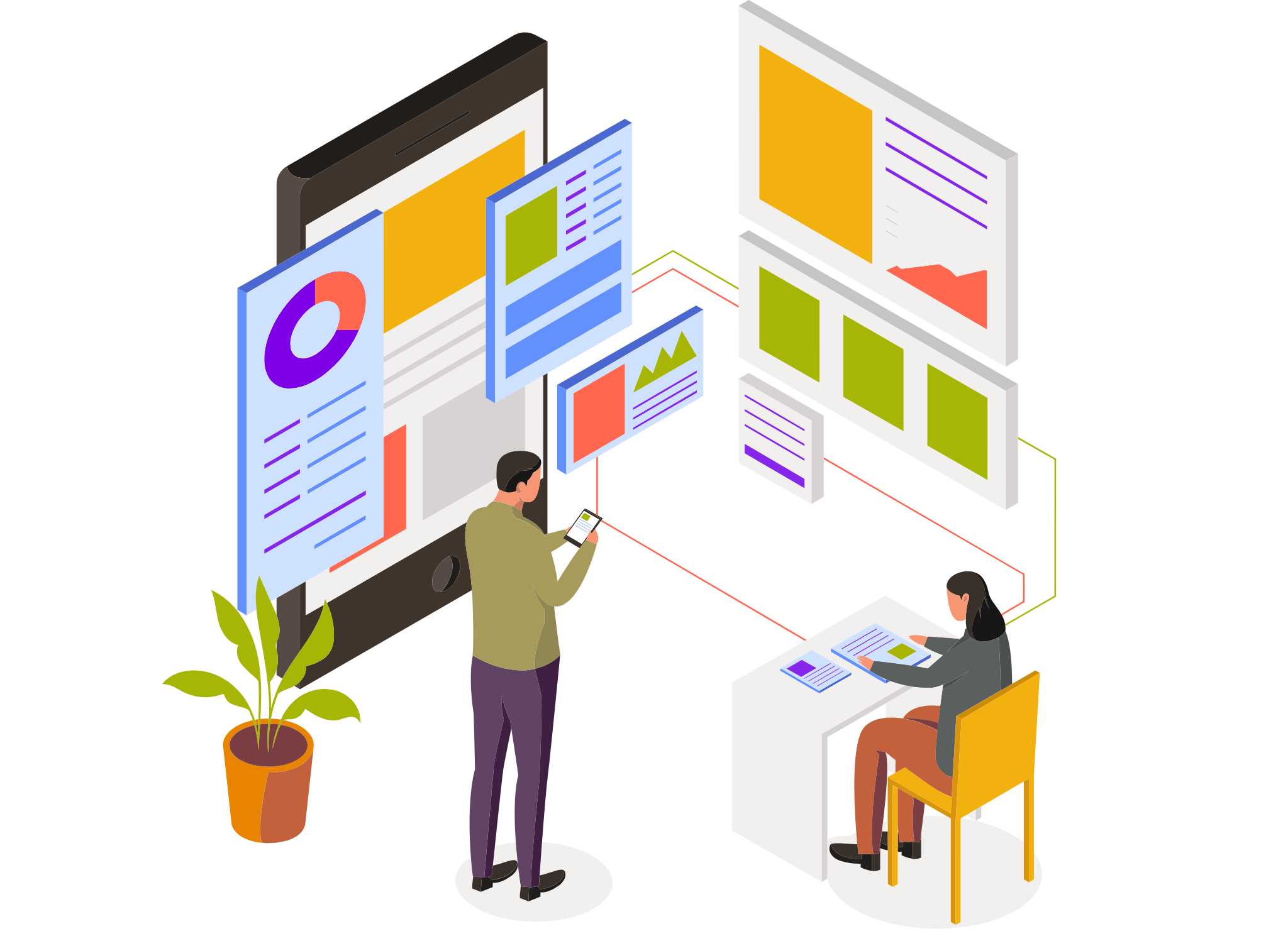Design Professional Training from Start to Finish with ADDIE
The ADDIE model is one of the most popular instructional systems design models, and it was the inspiration for many more modern design models used today. This model is cyclical rather than linear. It is not a model with a clear beginning and ending. Instead, it represents more of a wheel where you always continue through the cycle of phases to create and improve on training.
It is one of the most well-known instructional design models, but the drawbacks of the ADDIE model are that it is time consuming and often costly.
ADDIE Model of Instructional Design
Analysis
Design
Development
Implementation
Evaluation
ANALYSIS
The first step is analyzing the instructional goals, target audience, and required resources. Conducting a thorough analysis can save the organization a lot of time and resources. The analysis phase begins by defining a goal that the client or organization wants to achieve and understanding the problem that they are experiencing.
#1 - Needs Assessment
A needs assessment is conducted to determine if training is an appropriate part of a solution. This must be performed before continuing with the ADDIE model. A need for training exists when employees lack the skills, knowledge, or attitudes (SKA) to perform an assigned task. Basically, in a needs assessment, the instructional designer is trying to determine why people are not performing at the desired level and whether training could be a part of that solution.
Learning is ONLY a solution when employees lack skills, knowledge, or attitude (SKA). For example, if the employees do not have access to the tools they need to perform, training might not be a proper solution to that problem. Another example could be that employees are rewarded for doing the wrong thing and not rewarded to do the right thing. In these and other cases, learning might not solve the problem, so that is why it is very important for instructional designers to conduct a needs assessment.
Here are some ways to conduct a needs assessment:
Interviews
Direct observation
Questionnaires
Focus groups with the target audience and their supervisors
Research records and performance outputs of the target audience
After the needs assessment, conduct analyses to gather information on the learners, collect resources, and identify behaviors to improve job performance. Here are common analyses that are performed:
Task/Instructional Analysis
Learner/Audience Analysis
Contextual Analysis
Task Analysis
A task analysis (also sometimes called an Instructional analysis or job-task analysis) is a process of analyzing the tasks learners need to know to perform their job duties. It is a more traditional way to outline the steps involved in performing a task. A modern method more commonly used today is Action Mapping.
In a task analysis, the instructional designer often observes employees and/or interviews employees. A top-performing employee can work with the instructional designer to identify the main tasks that need to be performed, break the tasks down into sub-tasks, and organize the steps in the order they should be performed.
Let’s look at an example. The task that needs to be performed is cooking pancakes. Although this might seem like a simple 2-step task, there are numerous sub-skills involved.
COOK PANCAKES
Mix ingredients together
Measure amounts based on the consistency you desire (thin, medium, or fluffy)
Measure the ingredients based on the taste you prefer (sweet and salty levels)
Identify when the batter is mixed enough
Fry pancakes
Adjust the temperature correctly while cooking
Add the right amounts of butter for the size of the pan
Know when to add more butter
Flipp the pancake at the right time
Know when to take the pancakes off the stove
Fry multiple pancakes at the same time
After the outline of tasks is drawn out, the instructional designer conducts interviews or sends out surveys asking employees to rate each task by frequency, difficulty, and importance. This allows the instructional designer to understand which tasks are more important and what tasks to focus on more in the training. The instructional designer could ask the employees:
How often do you do this step?
How difficult is it to do this step?
How important is this step?
How bad are the consequences of skipping or not doing this step?
The instructional designer can also observe or interview employees who are performing poorly to understand where the gaps are in learning and where to focus training efforts. Finally, the instructional designer designs practice activities using the behaviors that are the highest priority.
Learner analysis
The goal of a learner analysis is for instructional designers to understand the learners in order to make learning more effective for them. It is important to empathize with the learners and know their wants and needs. Information on the learners is often gathered through interviews or surveys. To begin, the instructional designer identifies the groups within the target audience. This can include:
Demographics such as age range or gender
Cognitive characteristics: educational level, language preferences, prior knowledge, computer skills, and learning preferences
Social characteristics: interests, attitudes, biases, likes, and dislikes
And so much more
This information can be gathered by conducting surveys and interviewing the learners, their supervisors, and HR, and researching internal documents and data. This helps the instructional designer find out how much the learner already knows, what ways are they comfortable learning, what are their favorite learning experiences, what technology can they use proficiently, what art styles they prefer, and lots of more useful information on the learners.
All of this allows instructional designers to make decisions on how to design the learning experience and what kind of support learners might need in navigating that instruction. It results in a learning experience that is more tailored, appealing, and effective.
Contextual analysis
Where will learners be and what will they have access to when they are learning and when they are on the job? Not surprisingly, it is very important to understand how learners will be accessing the learning, where they will be, what is available in that space, and what tools they will have when they are learning. This could be face-to-face training with a facilitator in a room that only has 12 seats, on a wide-screen computer in an office where ten employees share two computers, in a very noisy area with lots of people, or outside on a small phone or tablet where it is difficult to charge their battery. Knowing this lets the learning designer make appropriate design decisions.
Other questions to ask are when will learners be accessing this learning and how long will the training last. There could be holidays around this time that impact the schedule or heavy snow that could make it difficult for learners to travel. Instructional designers need to also consider busy times of the day or the year when learners do not have extra time for training. Many industries get very busy around holidays or the months coming up to the end of the fiscal year.
After gathering all the information the instructional designer needs, it is time to begin designing.
DESIGN
The second phase of the ADDIE model is to design a learning solution that aligns the objectives and strategies with the instructional goals. The instructional designer designs instruction based on the information gathered in the analysis phase.
The design phase can look something like the following:
Write learning objectives
Collaborate with subject matter experts (SMEs) and use this information in the design
Choose a course format
Design assessments, exercises, activities, content, and lesson plans
Create storyboards and mockups
Collect files and documents of the visuals and audio that will be used
Coordinate with teams (graphic designers, multimedia professionals, software developers)
Create an Instructional Strategy
Design the interface and user experience
Learning Objectives
Be very specific in creating the learning objectives and use strong verbs that clearly define performance. Bloom's taxonomy is used a lot in selecting specific verbs that describe levels of cognitive learning. However, some argue that it is best to write observable actions that the learner can perform. Observable actions can include describing, showing, explaining, or demonstrating. Cognitive actions that cannot be observed can include knowing, understanding, or remembering.
Instructional Strategy
In this step, the instructional designer establishes clear connections between the course content and the learning objectives. It is also important for the instructional designer to introduce the content and learning activities in a logical sequence that builds on the learners’ knowledge and skills and decide how the learner will get feedback on their progress. The instructional designer begins to put together lectures, projects, readings, worksheets, discussions, activities, assessments, or any material that will be used in the learning solution. Gagne’s Nine Events or the Dick and Carey Design Model are often used in this step.
DEVELOP
This is when you develop the final work that will be implemented. Everything comes together in this phase. This phase can look something like the following:
Prototype
Develop the final course materials
Conduct a pilot test
Prototype
The instructional designer makes a sample or prototype of the course materials for stakeholders to review. The instructional designer gets feedback from the stakeholders on the prototype and the instructional strategy before putting the entire project together.
Develop the final course materials
Now the instructional designer puts together the entire course using the resources designed in the last phase, the feedback from the stakeholders, and the instructional strategy. Instructional designers sometimes use a rapid authoring tool in this step like Articulate Storyline or Adobe Captivate to create fully functional courses. Stakeholders review the final product and offer any final feedback.
Conduct a pilot test
It is important to conduct a run-through of the instruction to see if any final adjustments need to be made. This is a real-time rehearsal of the final course on a small sample of learners to see if everything goes smoothly and to collect any feedback on what could be improved.
IMPLEMENTATION
In this phase of the ADDIE model, the learning solution is delivered to the target audience. The approach in this phase depends on the type of learning experience that will be implemented (blended learning, webinar, face-to-face, eLearning, etc.).
Here is a simple way to think of this:
Prepare the learning
Engage the learners
Prepare the learning
This is when the learning solution is prepared for the learner. The instructional designer might or might not be directly involved in this step. The learning space is arranged by booking the rooms, preparing the number of seats or tables needed, testing the equipment, sharing the resources with those that will be involved, and anything else that needs to be prepared. For instructor-led courses, there could be train-the-trainer workshops to prepare facilitators to deliver the learning solution. For eLearning, this means putting the material on a learning management system (LMS).
Engage the learners
This is when learners are enrolled in the training and notified that the courses are ready. Learners are told if the learning is mandatory or optional, when it should be completed, or when they are scheduled to do the training.
EVALUATION
Although the evaluation phase is the last step in the ADDIE model, evaluation actually occurs throughout the entire process. There are two parts to this phase:
Formative evaluation - used continually to see where improvements need to be made
Summative evaluation - used at the end to make a conclusion about the training
Formative evaluation
This is conducted before the learning solution is implemented to see if it satisfies the standards created in the design phase. The Dick and Carey instructional design model outlines three steps of formative evaluation:
One-to-one - test the effectiveness of the training on one learner at a time and measure the clarity, impact, and feasibility of the learning
Small group - after applying the corrections from the one-to-one evaluation, test the effectiveness of the learning on a small group
Field trial - conduct a real-time rehearsal of the clarity, impact, and feasibility of the learning solution
Summative evaluation
This is conducted after implementation to measure the effectiveness of the training intervention. A common way to do this is using Kirkpatrick's model which looks at four areas:
Reaction - What did the learners think about the training? Was it relevant, engaging, and useful?
Learning - Did they learn and accomplish the learning objectives?
Behavior - Are they applying what they learned on the job?
Results - How has this helped the organization? Was there a return on investment (ROI)?







